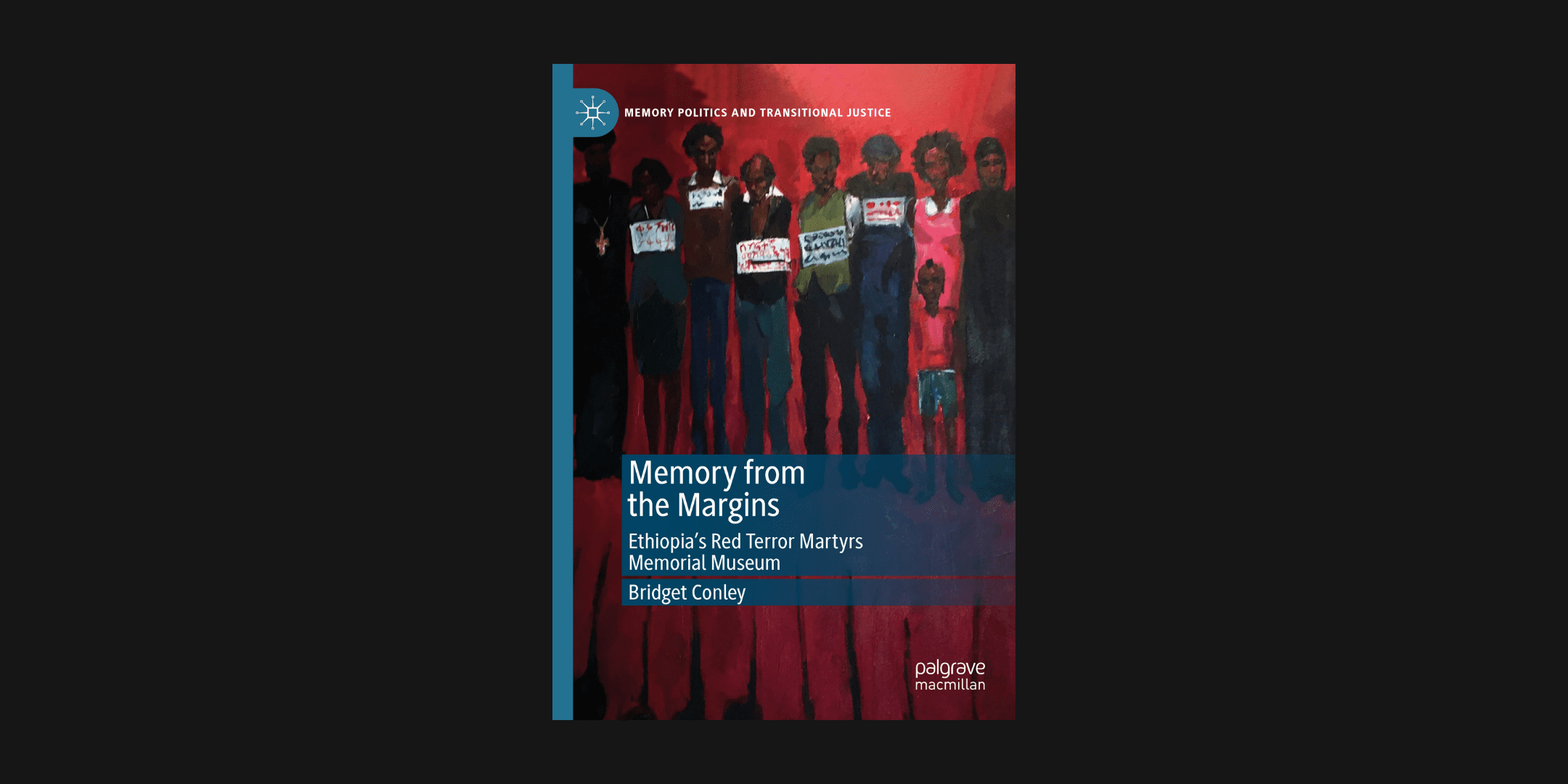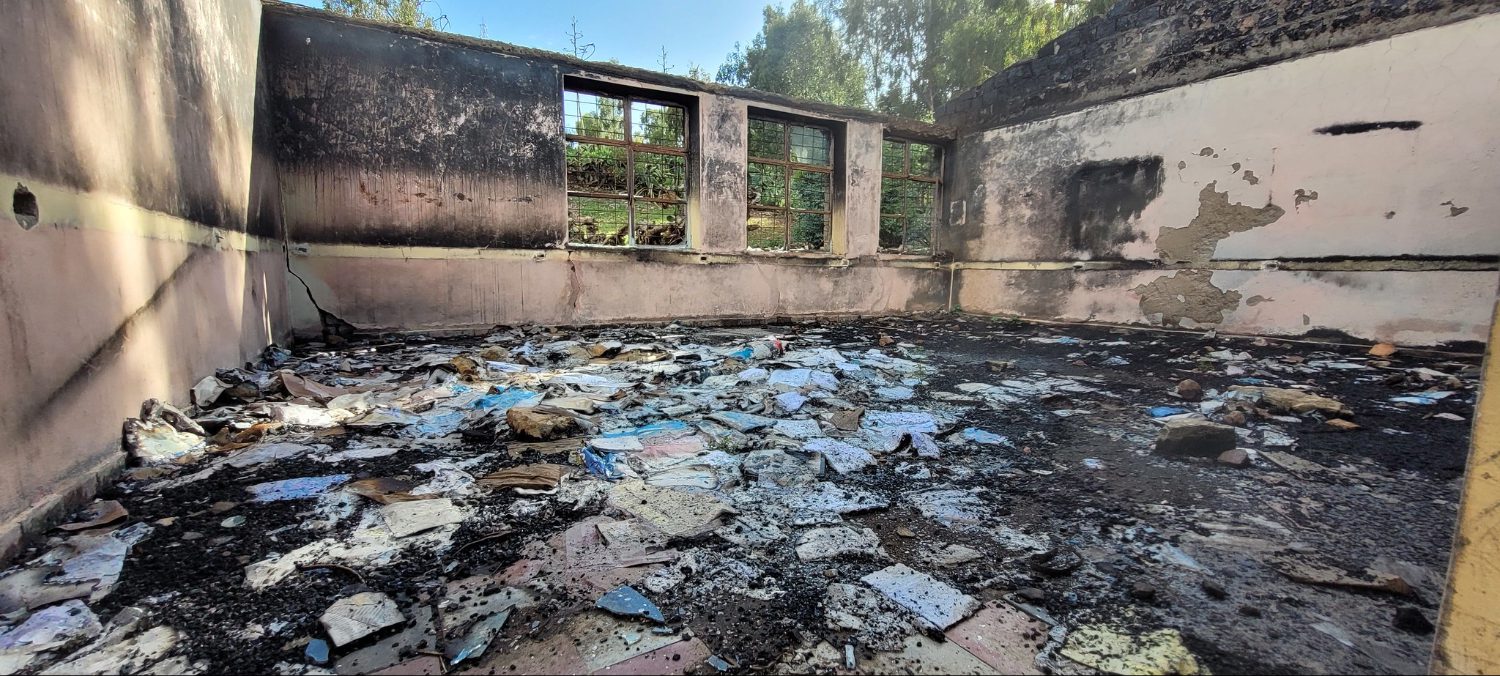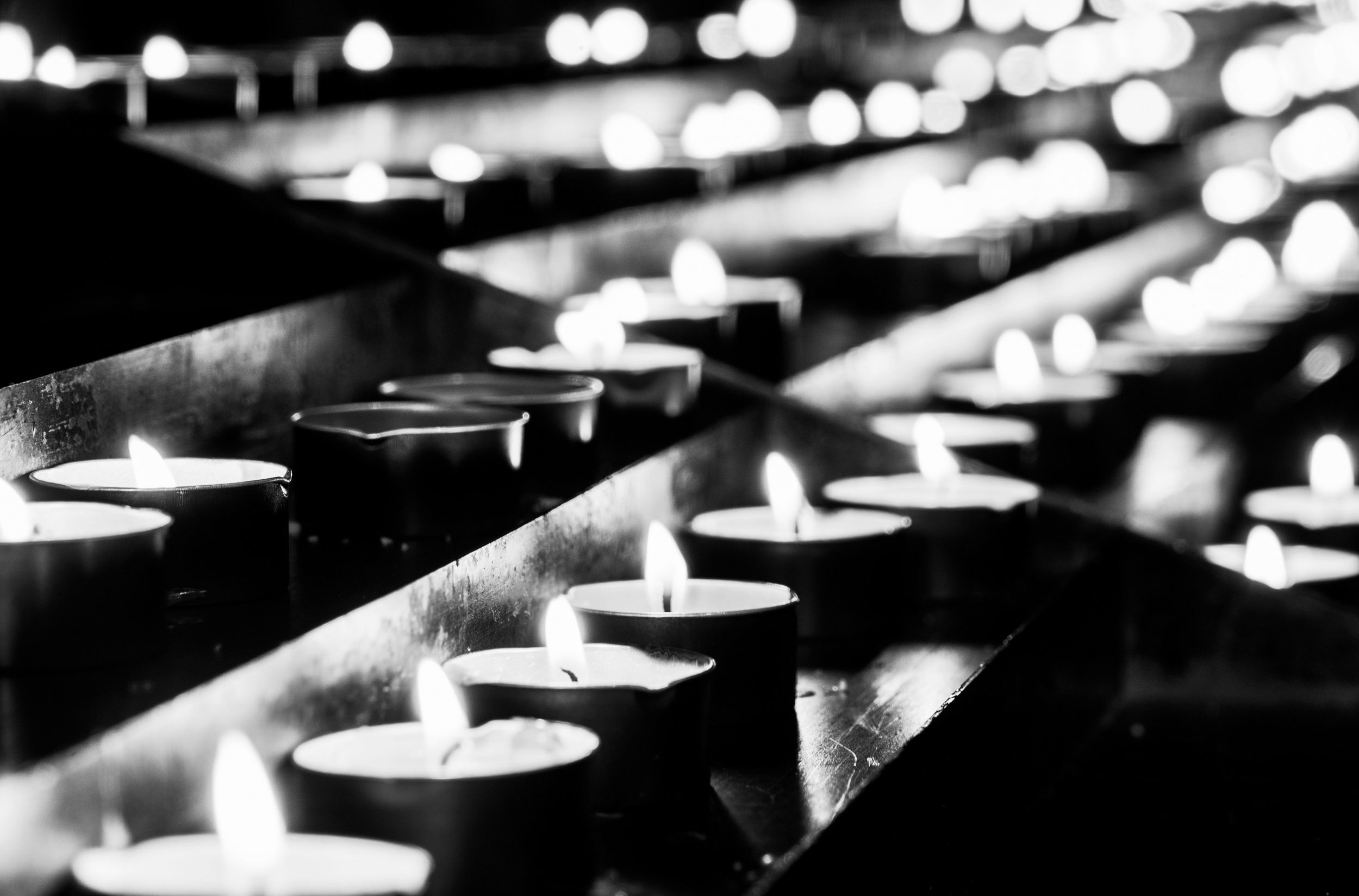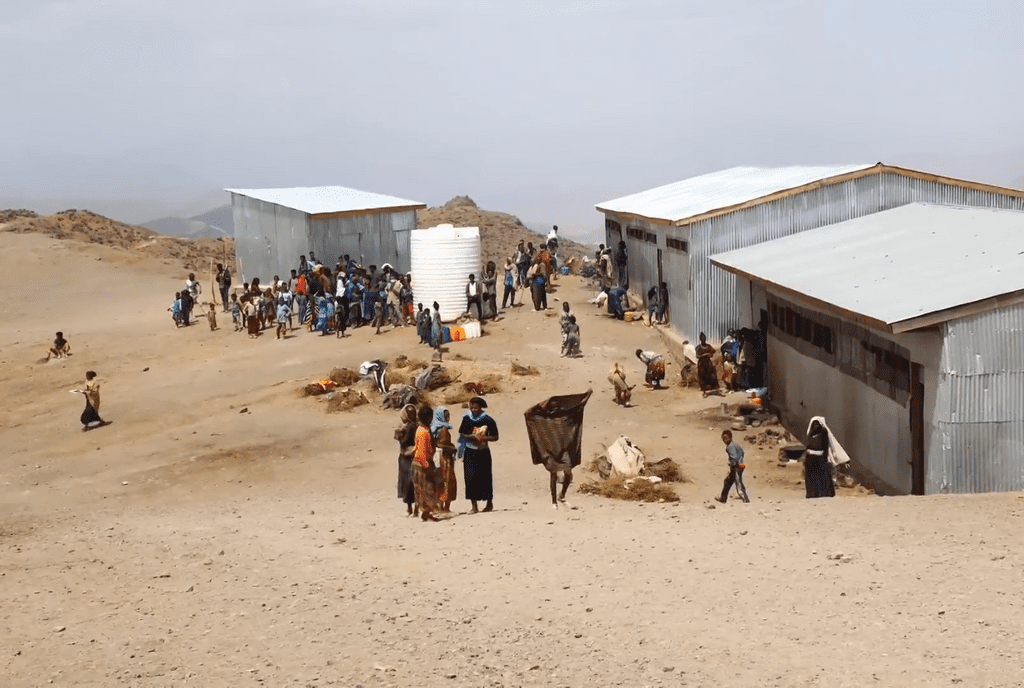My book Memory from the Margins: Ethiopia’s Red Terror Martyrs Memorial Museum (Palgrave 2019) has just been published and I am launching a three part blog series introducing the main themes of the volume. In this post, I begin with the two questions that prompted the research behind the book.
The first emerged out of a tour at the Museum in August 2013. I was guided through the exhibition by one of the Museum’s survivor docents, Freysembet. As the tour ended, I stumbled to find adequate words of farewell. It must be difficult to work here, I said, but rewarding as well, to teach this history to the next generation of Ethiopians. My words articulated a predictable sentiment, one that, based on familiarity with memorial museums, I thought would meet an equally unsurprising reply.
Frey’s response was jarring. “I hate working here,” he said flatly, “but I cannot get a job anywhere else.”
His words snagged with my expectations. The study was prompted by a desire to understand his perspective better. Many memorial museums employ survivors of the violence depicted: what do we know about the survivor-docents? These are people who have experienced violence (survivors) and then become museum professionals, educating others about it (docents). Embedded in their experiences as both survivors and educators about past violence are questions central to the looming debates within transitional justice: does memory bolster democracy, fuel grievance, empower survivors, contribute to altering state-citizen relations, or something altogether different?
There is not much research about survivors in museums. There is a bit more regarding survivor experiences in trials and truth commissions. These studies tell us that while transitional justice (including trials, truth commissions, memorialization and so forth) justifies itself in reference to ‘victims,’ the actual victims often get left behind. What is more, in the endeavor to ‘transition,’ a real grappling with the legacies of violence, which are often carved deep into institutional and interpersonal relations, also often gets left behind.
Frey’s comment also helps expose the platitude that victims of extreme violence become empowered by educating or testifying about past violence. Trauma just does not work that way. Even ‘successful’ survivors may struggle. I worked at the U.S. Holocaust Memorial Museum, from 2001 – 2011, and there learned that more than fifty years after the events of World War II, survivors still varied significantly in what work they felt comfortable engaging in and how often they were willing to speak of their personal experiences. Among the survivor-volunteers (as the USHMM referred to them) many recounted their personal experiences during the Holocaust to the visiting public, time after time. Within this group, there were enormous degrees of difference in how they could balance the pain of recalling the past with their interest in educating new generations. Some were willing to speak to any audience, day after day. Others were only able to speak a limited number of times a year; the emotional stress still overwhelmed them. Most others fell somewhere in between.
At the RTMMM, like in many memorial museums, survivors, each with a complicated relationship to their own past, are charged with conveying history to the complete strangers who walk through their doors: the visitor.
The survivor-docent/visitor dynamic relates to the second central question that prompted my study. What happens when we adjust the context for debates about the contributions of memory of violence to democratic practice? Moving away from abstractions and theories, what can we learn by examining the scene in which survivor and visitor share time together around the history? Further, how do various efforts at memorialization resonate with each other in a single national context? And what do these context-specific dynamics tell us about how we might imagine memory’s instructions for democracy? I found that the lessons are not straightforward. Memory of violence does not happily line up with the goals articulated by advocates for liberal democracy nor does it necessarily foment inter-group hostility.
In six chapters, the book pursues these two areas of question, one related to the roles of individuals and discrete scenes of memory transference within the Ethiopian context, and the other concerned with larger issues of how memory and democracy might be thought together. Throughout, these questions are pursued in the particular context of the politics of Red Terror memorialization in Ethiopia.
Here is an excerpt from the Introduction:
Each word tells a story: red, terror, martyrs, memorial, and museum.
Red is the color of violence. As Donald Donham writes, “the violent act, the violent event, is a bodily occurrence. It is the sharp flash against flesh, and it is the blood colored response” (2006, 18). It is also the color of a wound and of revolution. Its usage in the Ethiopian context (1976 – 1978) borrows from 1917 Russia. Red was a promise and threat that violence would fulfill revolutionary vision. But red is a spilling, overwhelming hue—a warning flag. Violence creates uncertainty out of which people change their “attitudes, commitments and identities. In this sense it can ‘speed up’ history” (Donham 2006 28). To study violence, is to enter a territory of extraordinary moments that are explicable only in retrospect through the lens of what violence created. The end product of violence colors what can be said about why or how events actually happened.
Terror is violence intent on destroying political ideas, and it is more effective than most would care to acknowledge. In today’s context, conceptual laziness identifies terror as the domain of nonstate actors; but their abilities pale compared to what a state can achieve. Terror in the case of the Ethiopian Red Terror was the military regime’s systematic effort to fracture the urban activist movement into cowered individuals, forced to flee alone or join new causes.
These activists, many of whom had no idea the scale of state wrath they would invoke, nonetheless knew very well why they took to the streets. They stood for a cause; thus, they understand the resultant deaths of their comrades in terms of martyrdom, not victimhood. Victimhood invariably depoliticizes by defining people in relation to suffering from what others did to them. Martyrs are those whose deaths contributed to an effort to realize ideals. However, in the context of a history in which multiple causes clashed and not everyone targeted for violence fell neatly into political categories, martyr is a complicated concept. Martyrdom is exclusionary; it implies dedication to a single cause, the value of which can redeem even the greatest loss of life. It invokes a question, which cause defines the Red Terror martyr: the fight against the military regime, for the ideals of Ethiopian democracy, or that of a particular political party?
Memorializing violent history does not settle a question about the meaning of the past. It localizes, materializes and invokes this question for a new set of protagonists in the present. Memory is thus an endeavor to make meaning for a new community through reference to past events.
To make meaning in the particular form of a museum, is to deploy techniques of assemblage for a visiting public in an institution designed to be permanent. Inherent in these museal traits are a constellation of tensions. There is the intended permanency of the structure for making meaning, and the reality that the visiting public changes over time and in relation to evolving concerns about the past and present. An exhibition juxtaposes elements (structure, texts, objects, photos, testimony) that do not seamlessly adhere to a unitary narrative arc. Tension also derives from the traumatic, or red, character of violence: unruly and unpredictable, it travels a different path from that of pedagogical goals that form the stated aims of any museum. In the end, the point of a museum is not to resolve these tensions, but to visit.
Each word also tells a story that draws into relief the outline of individual agency–how it is claimed and what exceeds those claims. Memory of any singular time period eddies in the crosscurrents of how individuals experienced and interpret its meaning, the processes of keeping memory, the forms that memory takes, and encounters with others around memorialization. The limits of controlling these currents are acutely visible in memory from the margins—stories that do not align with social and political master narratives at the global, national and social level. This is not to describe memory from the margins as necessarily oppositional; it can also be ambiguous. The key attribute of this form of memory is that it has not settled into place and thus powerfully retains a disruptive capacity, both within any individual memory narrative and when presentation of the past collides with new audiences.
Can memory contribute to democratic processes? This question is hasty—the real question resides elsewhere: how does memory compose social and political meaning? Memory from the margins creates meaning through disruption. The disruptive capacity is not an abstraction, but the product of discrete interactions between people and experiences that mark their lives. Thus, this study begins with, returns to and is guided by individual memory-keepers.
Understanding what memory of violence might ‘do’ required a dynamic or relational way of thinking about memory: memory from the margins. In my next blog entry, I’ll explain what I mean by ‘memory from the margins.’



